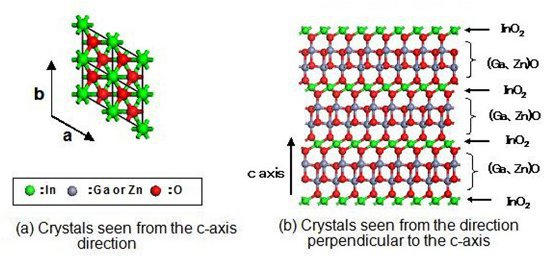Affiliate links on Android Authority may earn us a commission. Learn more.
Sharp IGZO displays developed for smartphone and tablet use
June 5, 2012

IGZO, short for indium gallium zinc oxide, is a new display technology currently developed by Sharp in collaboration with Semiconductor Energy Laboratory, that could soon be used in future smartphones, tablets, and other mobile devices.
IGZO displays can apparently offer “high crystallinity” as well as “higher resolutions, low power consumptions and higher performance touchscreens.” According to EE Times Asia, the new technology is different than current amorphous IGZO semiconductors tech:
This jointly developed new IGZO technology imparts crystallinity in an oxide semiconductor composed of indium (In), gallium (Ga) and zinc (Zn). Sharp and SEL have named this crystalline structure a CAAC (C-Axis Aligned Crystal) structure. Compared to current amorphous IGZO semiconductors, it enables even smaller thin-film transistors to be achieved and provides higher performance.
This might not mean very much right now, but we could see these IGZO displays equipping various mobile devices in the coming years. However, that does not mean that we’ll see these new IGZO panels in time for this year’s upcoming Android (and other) smartphones. The two companies are still in the research and development phase for these new IGZO displays and we should find out more details about such panels in the following months.

In the mean time, we have specifications for the first IGZO prototype displays:
LCD Displays
- Screen size: 4.9 / 6.1 inches
- Resolutions: 720 x 1280 / 2560 x 1600
- Pixel density: 302 ppi / 408 ppi
- Envisioned applications: smartphones / mobile devices
Organic EL display
- Screen size: 13.5 / 3.4 inches
- Resolutions: 3840 x 2160 (QFHD) / 540 x 960
- Pixel density: 326 ppi / 326 ppi
- Envisioned applications: white OLEDs + RGB color filters / flexible type
From the looks of it, Sharp seems determined to come up with its own proprietary display technology that could be soon used on various products and thus have a product that could compete against current AMOLED or SLCD displays that are used to manufacture various Android handsets and tablets. Unfortunately we don’t have a demonstration of such a display in action at this time.
Thank you for being part of our community. Read our Comment Policy before posting.